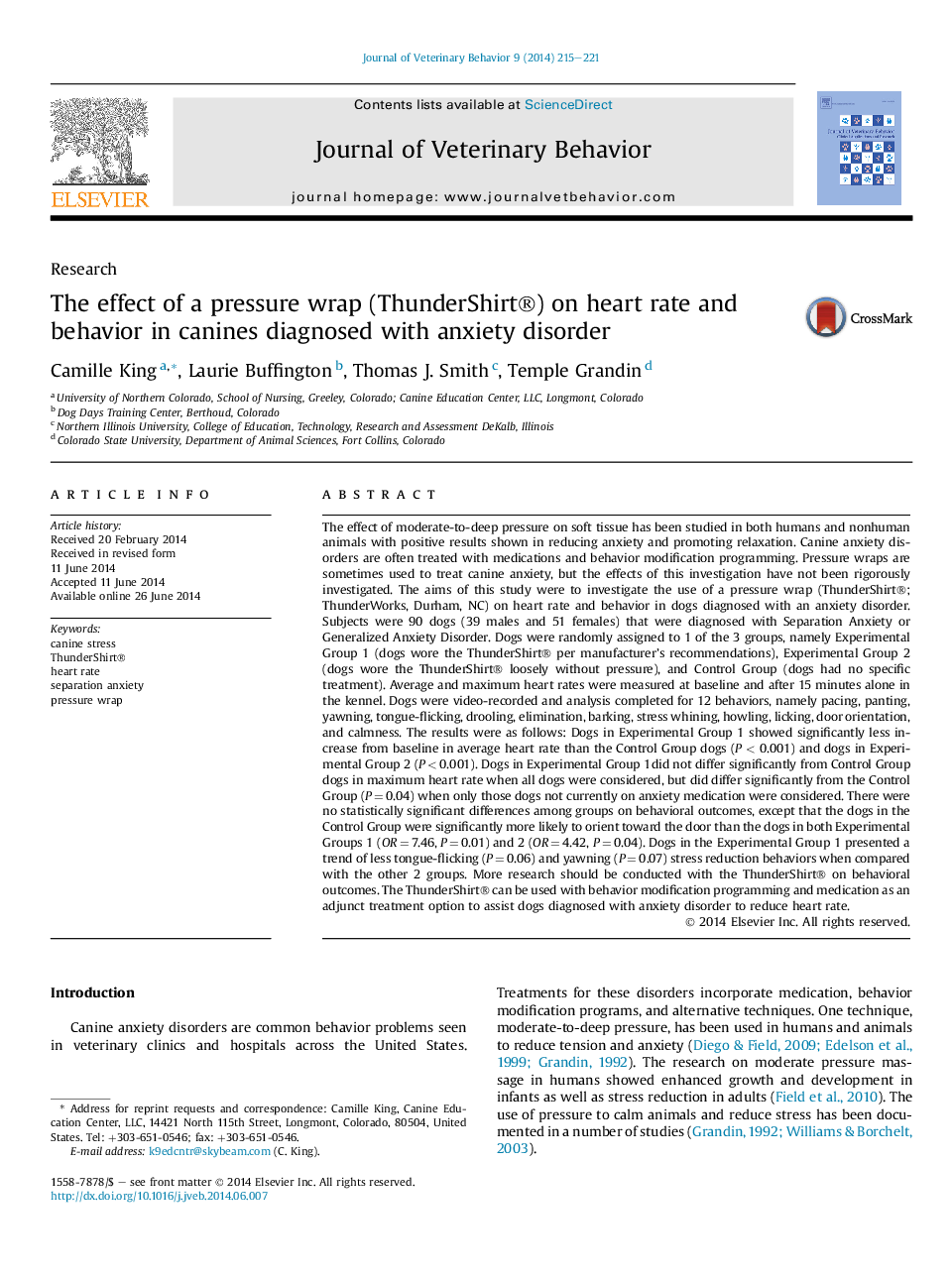| Article ID | Journal | Published Year | Pages | File Type |
|---|---|---|---|---|
| 2398887 | Journal of Veterinary Behavior: Clinical Applications and Research | 2014 | 7 Pages |
The effect of moderate-to-deep pressure on soft tissue has been studied in both humans and nonhuman animals with positive results shown in reducing anxiety and promoting relaxation. Canine anxiety disorders are often treated with medications and behavior modification programming. Pressure wraps are sometimes used to treat canine anxiety, but the effects of this investigation have not been rigorously investigated. The aims of this study were to investigate the use of a pressure wrap (ThunderShirt®; ThunderWorks, Durham, NC) on heart rate and behavior in dogs diagnosed with an anxiety disorder. Subjects were 90 dogs (39 males and 51 females) that were diagnosed with Separation Anxiety or Generalized Anxiety Disorder. Dogs were randomly assigned to 1 of the 3 groups, namely Experimental Group 1 (dogs wore the ThunderShirt® per manufacturer's recommendations), Experimental Group 2 (dogs wore the ThunderShirt® loosely without pressure), and Control Group (dogs had no specific treatment). Average and maximum heart rates were measured at baseline and after 15 minutes alone in the kennel. Dogs were video-recorded and analysis completed for 12 behaviors, namely pacing, panting, yawning, tongue-flicking, drooling, elimination, barking, stress whining, howling, licking, door orientation, and calmness. The results were as follows: Dogs in Experimental Group 1 showed significantly less increase from baseline in average heart rate than the Control Group dogs (P < 0.001) and dogs in Experimental Group 2 (P < 0.001). Dogs in Experimental Group 1did not differ significantly from Control Group dogs in maximum heart rate when all dogs were considered, but did differ significantly from the Control Group (P = 0.04) when only those dogs not currently on anxiety medication were considered. There were no statistically significant differences among groups on behavioral outcomes, except that the dogs in the Control Group were significantly more likely to orient toward the door than the dogs in both Experimental Groups 1 (OR = 7.46, P = 0.01) and 2 (OR = 4.42, P = 0.04). Dogs in the Experimental Group 1 presented a trend of less tongue-flicking (P = 0.06) and yawning (P = 0.07) stress reduction behaviors when compared with the other 2 groups. More research should be conducted with the ThunderShirt® on behavioral outcomes. The ThunderShirt® can be used with behavior modification programming and medication as an adjunct treatment option to assist dogs diagnosed with anxiety disorder to reduce heart rate.
